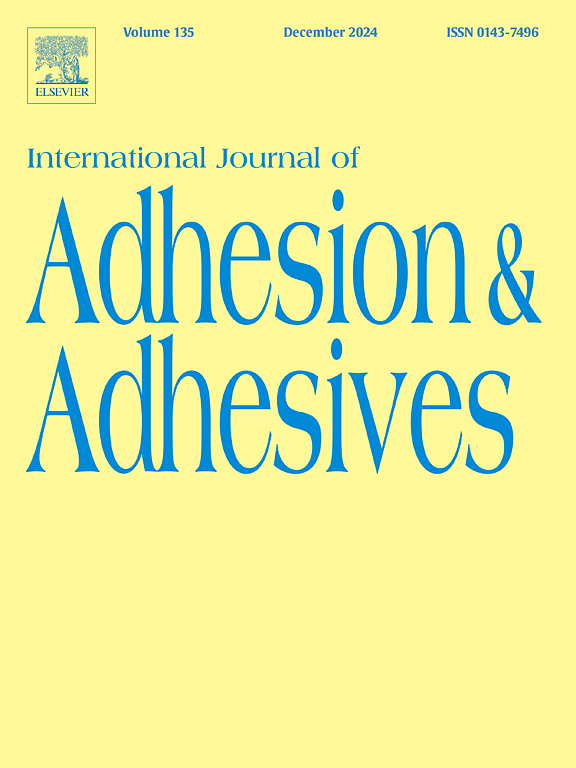基于声发射和数字图像相关的补丁修复复合材料的渐进损伤分析
IF 3.5
3区 材料科学
Q2 ENGINEERING, CHEMICAL
International Journal of Adhesion and Adhesives
Pub Date : 2025-07-26
DOI:10.1016/j.ijadhadh.2025.104111
引用次数: 0
摘要
研究了补片修复复合材料结构的损伤行为。采用[45/90/ -45/0]S堆叠顺序的准各向同性碳/环氧复合材料作为母板,并钻一个中心孔。采用高韧性Araldite 2015胶粘剂粘接钢板两侧圆形贴片。准备无缺口和有缺口的标本进行比较。对所有试件进行准静态拉伸试验,采用声发射(AE)和数字图像相关(DIC)进行损伤监测。结果表明,修复后的复合材料的极限拉伸强度恢复了75%。DIC结果表明,纵向应变集中在贴片中心,表明载荷重新分配成功。在孔周围母板四角处出现应变集中,说明由于补片修复导致应力集中松弛。声发射数据表明,损伤始于90°层的基体开裂,随后是纤维/基体脱粘、分层和母板纤维断裂。在整个测试过程中,贴片和粘合层保持完整。本文章由计算机程序翻译,如有差异,请以英文原文为准。
Progressive damage analyses of patch repaired composites using acoustic emission and digital image correlation
This paper investigates the damage behaviour in patch-repaired composite structures. Quasi-isotropic carbon/epoxy composites with a [45/90/–45/0]S stacking sequence was used as the parent plate, drilled with a central hole. High toughness Araldite 2015 adhesive was used to bond circular patches on both sides of the plate. Unnotched and notched specimens were prepared for comparison. Quasi-static tensile tests were performed on all specimens, with acoustic emission (AE) and digital image correlation (DIC) used for damage monitoring. Results showed a 75 % recovery in ultimate tensile strength in the repaired composite. DIC results indicated that longitudinal strain concentrated at the patch centre, showing successful load redistribution. Strain concentration occurred at the four corners of the parent plate around the hole, indicating stress concentration relaxation due to the patch repair. AE data suggested damage initiation with matrix cracking in the 90° plies, followed by fibre/matrix debonding, delamination, and fibre breakage in the parent plate. The patches and adhesive layer remained intact throughout the test.
求助全文
通过发布文献求助,成功后即可免费获取论文全文。
去求助
来源期刊

International Journal of Adhesion and Adhesives
工程技术-材料科学:综合
CiteScore
6.90
自引率
8.80%
发文量
200
审稿时长
8.3 months
期刊介绍:
The International Journal of Adhesion and Adhesives draws together the many aspects of the science and technology of adhesive materials, from fundamental research and development work to industrial applications. Subject areas covered include: interfacial interactions, surface chemistry, methods of testing, accumulation of test data on physical and mechanical properties, environmental effects, new adhesive materials, sealants, design of bonded joints, and manufacturing technology.
 求助内容:
求助内容: 应助结果提醒方式:
应助结果提醒方式:


